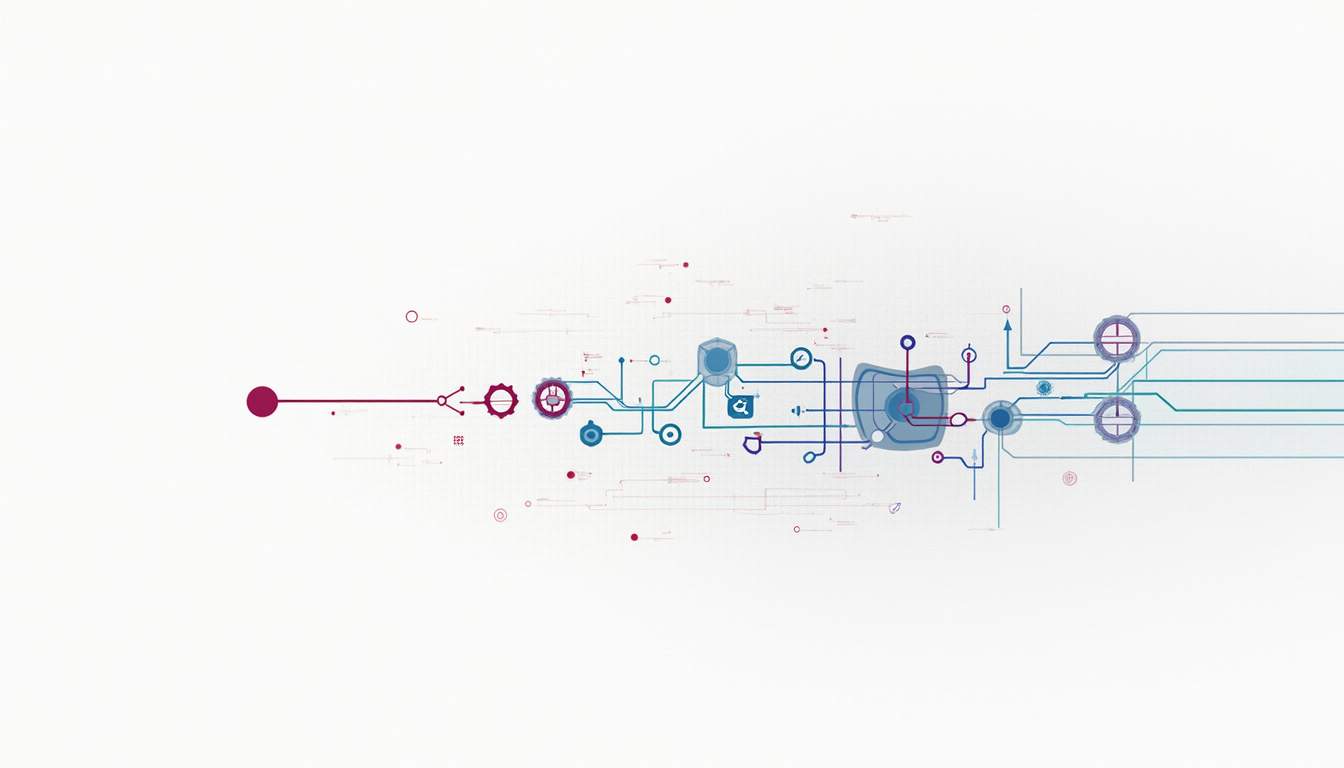In an increasingly interconnected world, the integration of cyber-physical systems (CPS) has become a focal point for innovation across various industries. These systems, which blend physical processes with computational elements, are pivotal in sectors such as manufacturing, healthcare, and smart cities. However, one of the most significant hurdles in leveraging the full potential of CPS is achieving data interoperability. This article delves into the challenges and dimensions of data interoperability within CPS, exploring its implications and potential solutions.
Understanding Cyber-Physical Systems
Cyber-physical systems represent a convergence of the physical and digital realms, where embedded computing, networking, and physical processes interact seamlessly. These systems can range from simple sensor networks to complex industrial automation setups. The essence of CPS lies in their ability to monitor and control physical processes in real-time, enabling enhanced efficiency and decision-making.
The Role of Data in CPS
Data serves as the backbone of cyber-physical systems, facilitating communication between the physical and digital components. Sensors collect data from the physical environment, which is then processed and analyzed to inform actions or decisions. This data can include anything from temperature readings in a smart building to real-time patient health metrics in a healthcare application. The ability to share and utilize this data across different systems is crucial for the effective functioning of CPS.
Interoperability Defined
Interoperability refers to the ability of different systems, devices, or applications to work together and exchange information seamlessly. In the context of CPS, it encompasses the integration of various technologies, standards, and protocols to enable coherent data exchange. Achieving interoperability is essential for ensuring that CPS can operate efficiently, especially as they become more complex and interconnected.
Challenges of Data Interoperability in CPS
Despite the importance of interoperability, several challenges hinder its realization in cyber-physical systems. These challenges stem from technical, organizational, and regulatory factors that complicate the integration of diverse systems.
Technical Challenges
One of the primary technical challenges is the diversity of data formats and protocols used across different systems. Each CPS may employ unique data representations, making it difficult to achieve a common understanding. For instance, a manufacturing system might use proprietary protocols that are incompatible with those used in a smart grid application. As a result, data exchange becomes cumbersome, often requiring extensive translation efforts.
Additionally, the rapid evolution of technology poses a significant challenge. As new devices and systems are developed, they may not adhere to existing interoperability standards. This creates a fragmented landscape where older systems struggle to communicate with newer technologies, leading to inefficiencies and potential data silos.
Organizational Barriers
Beyond technical issues, organizational barriers can impede efforts toward achieving data interoperability. Different stakeholders involved in CPS, such as manufacturers, software developers, and end-users, often have varying priorities and objectives. This misalignment can result in a lack of collaboration, hindering the establishment of common standards and practices.
Moreover, the absence of a unified governance framework can lead to inconsistent data management practices across organizations. Without clear guidelines, data ownership, privacy, and security concerns may arise, further complicating the interoperability landscape.
Regulatory and Compliance Issues
Regulatory frameworks also play a crucial role in shaping data interoperability in CPS. Different industries are subject to varying regulations regarding data sharing and privacy. For example, healthcare systems must comply with stringent regulations like HIPAA in the United States, which can restrict data sharing even among interoperable systems. Navigating these regulatory landscapes can be daunting, often resulting in reluctance to share data across systems.
Dimensions of Data Interoperability
To address the challenges of data interoperability in cyber-physical systems, it is essential to explore its various dimensions. Understanding these dimensions can provide insights into potential solutions and strategies for enhancing interoperability.

Technical Dimension
The technical dimension of interoperability focuses on the standards, protocols, and interfaces that enable data exchange between systems. Establishing common data formats and communication protocols is crucial for ensuring that different CPS can understand and process shared information. Initiatives such as the Internet of Things (IoT) standards and frameworks aim to create a more cohesive ecosystem for data exchange.
Furthermore, the adoption of application programming interfaces (APIs) can facilitate interoperability by providing standardized methods for systems to communicate. APIs allow developers to create applications that can interact with multiple systems, streamlining data exchange and reducing integration complexity.
Semantic Dimension
The semantic dimension addresses the meaning and context of the data being exchanged. Different systems may interpret the same data differently based on their underlying models and assumptions. To overcome this challenge, efforts must be made to establish shared ontologies and vocabularies that define the meaning of data elements.
By creating a common understanding of data semantics, organizations can ensure that information is interpreted consistently across different systems. This is particularly important in CPS, where accurate data interpretation can significantly impact decision-making and system performance.
Organizational Dimension
The organizational dimension emphasizes the importance of collaboration and alignment among stakeholders involved in cyber-physical systems. Establishing partnerships between different organizations can facilitate the development of common standards and practices. Collaborative initiatives, such as industry consortia and standardization bodies, can play a pivotal role in driving interoperability efforts.
Moreover, fostering a culture of openness and transparency within organizations can encourage data sharing and collaboration. By prioritizing interoperability as a strategic objective, organizations can work together to overcome barriers and create a more integrated ecosystem.
Strategies for Enhancing Data Interoperability
To navigate the complexities of data interoperability in cyber-physical systems, organizations can adopt several strategies aimed at overcoming the identified challenges and dimensions.
Adopting Standardized Protocols
One of the most effective strategies for enhancing data interoperability is the adoption of standardized protocols and frameworks. By utilizing widely accepted standards, organizations can ensure that their systems can communicate effectively with others. Initiatives such as the Open Connectivity Foundation (OCF) and the Industrial Internet Consortium (IIC) work toward developing and promoting standards that facilitate interoperability across various domains.
Standardized protocols not only simplify integration efforts but also reduce the risk of vendor lock-in, allowing organizations to choose best-of-breed technologies that meet their needs without sacrificing interoperability.
Implementing Middleware Solutions
Middleware solutions can serve as a bridge between disparate systems, enabling seamless data exchange and communication. These solutions can abstract the complexities of different protocols and data formats, allowing systems to interact without the need for extensive customization. Middleware can also provide functionalities such as data transformation, message routing, and protocol translation, further simplifying interoperability efforts.
By leveraging middleware, organizations can accelerate the integration of new technologies into their existing CPS, fostering a more cohesive and interoperable environment.
Encouraging Collaborative Ecosystems
Building collaborative ecosystems is essential for driving data interoperability in cyber-physical systems. Organizations should actively engage with industry partners, research institutions, and standardization bodies to share knowledge and best practices. Collaborative initiatives can lead to the development of common standards and frameworks that benefit the entire ecosystem.
Additionally, fostering a culture of innovation and collaboration within organizations can encourage employees to explore new ideas and approaches to interoperability. By prioritizing teamwork and cross-disciplinary collaboration, organizations can create an environment conducive to solving interoperability challenges.
Future Trends in Data Interoperability
The landscape of data interoperability in cyber-physical systems is continually evolving, driven by advancements in technology and changing industry needs. Several trends are emerging that are likely to shape the future of interoperability.

Increased Adoption of Artificial Intelligence
Artificial intelligence (AI) is poised to play a significant role in enhancing data interoperability. AI algorithms can analyze vast amounts of data from diverse sources, identifying patterns and relationships that may not be immediately apparent. This capability can facilitate more effective data integration and interpretation, improving the overall performance of CPS.
Moreover, AI can assist in automating data transformation processes, reducing the manual effort required for interoperability. By leveraging machine learning techniques, organizations can develop adaptive systems that continuously improve their interoperability capabilities over time.
Growth of Edge Computing
Edge computing is another trend that is likely to impact data interoperability in CPS. By processing data closer to the source, edge computing reduces latency and bandwidth requirements, enabling real-time decision-making. This shift can enhance the responsiveness of CPS, particularly in applications where timely data exchange is critical.
As edge computing becomes more prevalent, organizations will need to ensure that interoperability extends to edge devices and systems. Developing standardized protocols for edge computing environments will be essential for maintaining seamless data exchange across the entire CPS ecosystem.
Emphasis on Cybersecurity
As cyber-physical systems become more interconnected, the importance of cybersecurity cannot be overstated. Ensuring data security and privacy is crucial for fostering trust among stakeholders and facilitating data sharing. Organizations must prioritize cybersecurity measures that protect data integrity while enabling interoperability.
Implementing robust security protocols, conducting regular audits, and fostering a culture of security awareness can help organizations navigate the complexities of cybersecurity in CPS. By addressing security concerns proactively, organizations can create a more secure and interoperable environment.
Conclusion
Navigating data interoperability in cyber-physical systems presents a complex set of challenges and dimensions that require careful consideration. By understanding the technical, semantic, and organizational aspects of interoperability, organizations can develop effective strategies to enhance data exchange and collaboration.

As technology continues to evolve, embracing standardized protocols, implementing middleware solutions, and fostering collaborative ecosystems will be essential for overcoming interoperability barriers. Additionally, keeping an eye on emerging trends such as AI, edge computing, and cybersecurity will help organizations stay ahead in the ever-changing landscape of cyber-physical systems.
Ultimately, achieving data interoperability is not just a technical challenge; it is a strategic imperative that can unlock new opportunities for innovation, efficiency, and growth in the age of cyber-physical systems.
Take Control of Your Cyber-Physical Systems with Cybersort
As you seek to overcome the challenges of data interoperability and harness the full potential of your cyber-physical systems, Cybersort stands ready to guide you through the complexities. With our expertise in documenting and structuring the software, assets, and data connections essential to your operations, we empower you to achieve safer operations, enhanced cybersecurity, and successful digital transformation. Don’t let interoperability barriers hold you back. Book a discovery call with us today and take the first step towards seamless integration and strategic growth.


